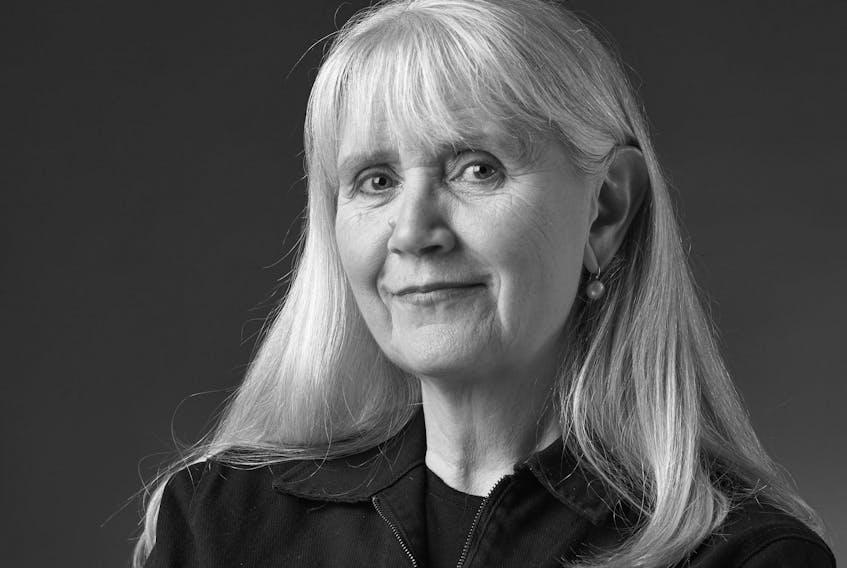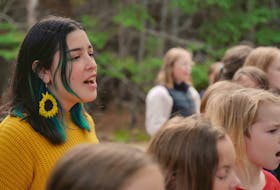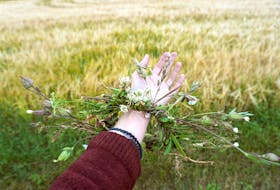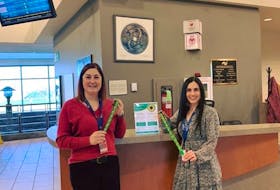Writing and talking about Labrador is nothing new to Anne Budgell.
Budgell is the child of two Labradorians and lived in both Happy Valley-Goose Bay and Labrador City in her younger days before embarking on a decades long career with the CBC.
She was also one of the directors of a documentary “Last Days of Okak” produced in 1985. Now, she’s written a book about Okak and what happened there, titled “We all expected to die: Spanish Influenza in Labrador, 1918-1919.”
“The documentary really only focuses on the events in Okak when people got sick, when people died, and then immediately after that,” she told The Labradorian. “What I wanted to do in this book was research the story and find out what led up to that. How the flu got there and what happened afterwards. I wanted to find out if the government of Newfoundland ever did anything or said anything about this flu disaster that happened in Labrador.”
She said in researching the book for the last three years she scoured government documents, diaries, letters, affidavits, and newspaper reports and found out a lot that had never been

published.
“I did not know everything about this story, not by a long shot,” she said. “The film focused on ‘we got sick, people died and some survived.’ It was telling the story of a few weeks of what happened in Okak. What I’m putting in the book is a lot more than that. My book is also about what happened in Sandwich Bay and Lake Melville, not just what happened on the north coast.”
The missionary vessel Harmony brought the flu to Hebron first, Budgell said, and then to Okak, but then Newfoundland mail and freight ship Sagona brought the flu to Cartwright and Rigolet and it spread from there into Lake Melville and all around Sandwich Bay.
Budgell said, with help from Them Days magazine, they found there were over 70 people who died in Sandwich Bay from influenza, and there were only about 320 people who lived in the bay, a big part of the population.
She found a few extended family members who had fallen prey to the illness, which she said is common for people in most of Labrador, few families were not impacted.
The names of all who were lost are being published in her book and in a special edition of Them Days. What happened in Labrador isn’t the whole story, she said, and that’s what she was looking to find.
“I wanted to stitch this all together and connect the dots that were missing,” she said. “I wanted to connect the stories, not only the north coast to Sandwich Bay story, but also the Newfoundland piece. These people were responsible for Labrador but they never cared about Labrador, they never took care of Labrador.
“They thought of Labrador as a place you go to fish in the summertime and otherwise they didn’t think about it at all.”
There’s a chapter in the book titled ‘Let them die,’ which Budgell said references a remark allegedly made when the Newfoundland government was given word of the pandemic in Labrador.
The government of the day was asked to send help by way of a message out of Sandwich Bay on the last vessel that left to go back to Newfoundland. No help was sent.
The man who brought the message to the government was Ralph Parsons, Budgell said, the brother of the manager of the Hudson’s Bay store in Cartwright at that time.
“Ralph Parsons had lived in Labrador himself, knew the people, knew the situation, and he went to government and asked for help,” she said. “He was told no, it was too late, couldn’t get coal for his ship and all the rest of it.
“He knew that was excuses and he told a newspaper editor in St. John’s that a man attending that meeting when he asked for help said, ‘Let them die, it’ll save us the trouble of feeding them.’”
The reason the pandemic spread so quickly in Labrador, Budgell said, was the lack of health care.
Okak, the crown jewel of the Moravian settlements on the north coast of Labrador, had a hospital but no doctor.
She said when people started getting sick, everybody got sick and there was nobody to take care of anybody. Nobody to put wood in the stove, nobody could bring water in for people to drink so people died, not only of flu and pneumonia, but also from hypothermia and dehydration because there as no one to take care of people.
“It was 100 years ago, people didn’t know about immunity, they didn’t know that you could be sick and not look it, they didn’t know how infection travelled,” she said. “People were trying to find out why all these people died and they came up with theories about how the Inuit must be carriers, they must have been dirty, they must have been sinning against God.
“They kept finding all kinds of reasons to blame them for getting this sickness, which was worldwide. This is the thing that pisses me off so much is that people were blamed for this.”
She wanted that corrected on the historical record, she said, which is one of the reasons writing this book was so important to her. This is her second book about Labrador, the first being “Dear Everybody: A woman's journey from Park Avenue to a Labrador Trap Line”, a book about the life of Manhattan socialite Barbara Mundy, a volunteer with the Grenfell Mission in the 1940’s.
The official launch of the book was held in St. John’s Nov. 28. There will be another launch in Happy Valley-Goose Bay on Saturday, Dec. 15 in the atrium of the Labrador Health Centre.









